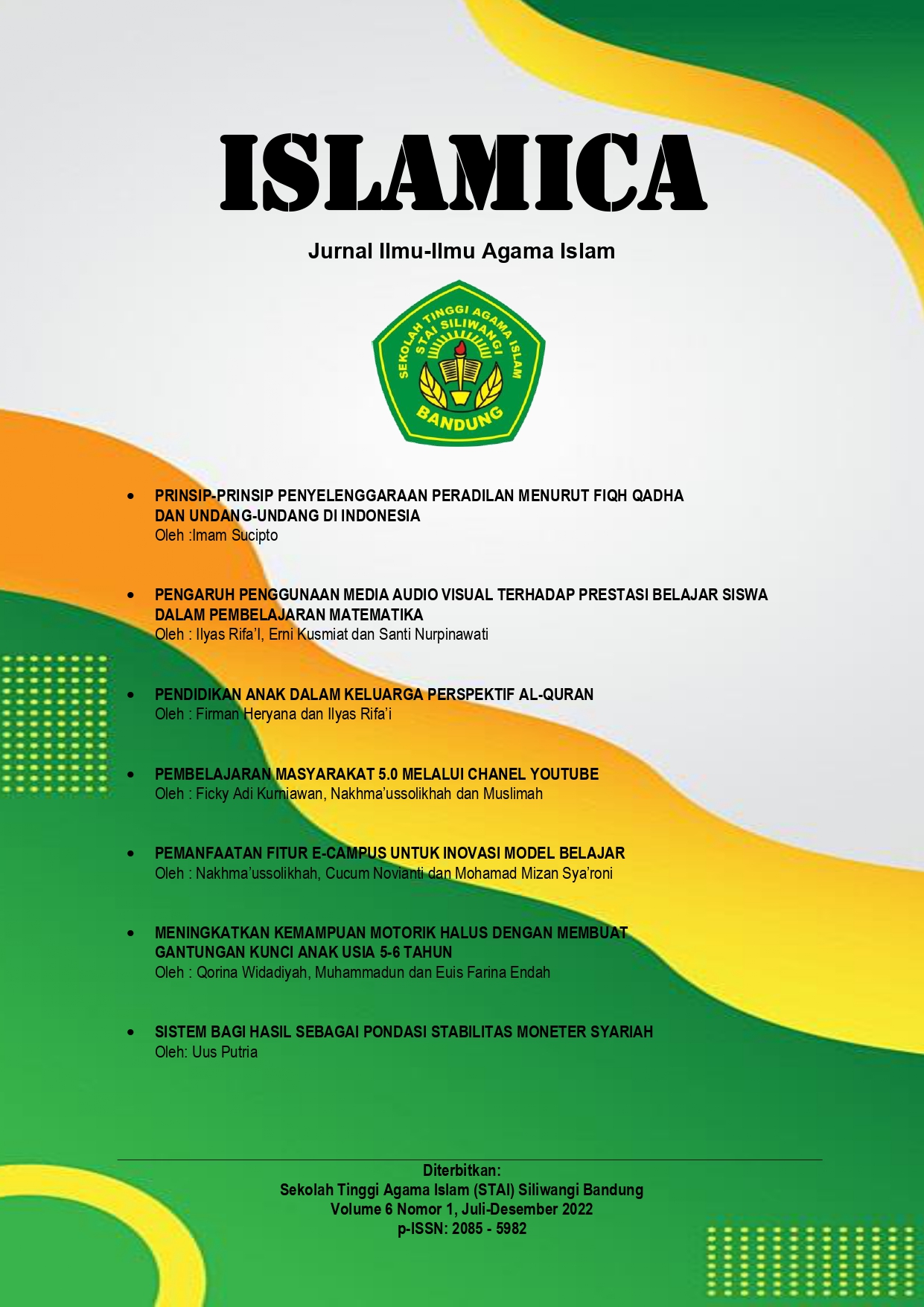Pembelajaran Masyarakat 5.0 Melalui Chanel Youtube
DOI:
https://doi.org/10.59908/islamica.v6i1.4Keywords:
Learning, Society, Youtube, 5.0.Abstract
The influence of individuals on lifestyle and the frequency of internet access affects attitudes, mindsets, paradigms and other actions on aspects of personal, social, study and career life. This change brings the individual into an individualist society. Lack of caring attitude towards other people and around the place of residence, one of the causes of this behavior include feeling comfortable when accessing YouTube. The purpose of this study is to increase understanding of the personal and social aspects. Technology is present as a tool or media to facilitate individuals in living their lives more effectively and efficiently. This type of research uses a qualitative approach to phenomenological design. Data collection techniques using observation, questionnaires and interviews. The results of this study explain that people in the technological era are still confused about the use of Android with various features. the ease of internet access has brought about a major change in lifestyle, thinking. Some people have a high level of understanding of the use of technology, namely by using it for online business, establishing communication, and learning and developing a career.
References
Abidin, Z. (2020). Pemanfaatan Channel Youtube di KUA Ujung Kota Parepare dalam Membentuk Keluarga Sakinah.
Budiyono, A., & Faishol, L. (2020). Jurnal Bimbingan Konseling Pendidikan Islam Coution : Journal of Counseling and Education PERAN PUSAT INFORMASI KONSELING REMAJA ( PIK-R ) DALAM MENINGKATKAN KEMAMPUAN. 1(02), 50–59.
Cahyani, B. H., & Putrianti, F. G. (2021). Psikoedukasi Untuk Meningkatkan Pemahaman Ibu Dalam Pengasuhan Positif. PLAKAT (Pelayanan Kepada Masyarakat), 3(1), 107. https://doi.org/10.30872/plakat.v3i1.5844
Cahyono, G., & Hassani, N. (2019). Youtube Seni Komunikasi Dakwah Dan Media Pembelajaran. Al-Hikmah, 13(1), 23. https://doi.org/10.24260/al-hikmah.v13i1.1316.
Faiqah, F., Nadjib, M., & Amir. A. S. (2016). Kareba. YouTube Sebagai Sarana Komunikasi Bagi Komunitas Makassarvidgram, 5(2), 259-272. Diakses melalui E-Journal: http://journal.unhas.ac.id/index.php/kareba/article/view/1905/1063
HighEnd. (2017). HighEnd Magazine Media Kit 2017. Jakarta: HighEnd.
Leliana, I., & Gogali, V. A. (2019). Strategi Humas Kementerian Perindustrian Dalam Menginformasikan Layanan Publik Melalui Youtube. J-Ika, 6(2), 110–119. https://doi.org/10.31294/kom.v6i2.6836
Maheswara, J. & Dwiutami, L. (2013). JPPP. Pola Perilaku Dewasa Muda Yang Kecenderungan Kecanduan Situs Jejaring Sosial, 2(1), 51-62. Diakses melalui E-Journal: http://journal.unj.ac.id/unj/index.php/jppp/article/download/4363/3279/ Martin, M., & Elmansyah, T. (2020). Penguatan Nilai-nilai Tradisi Pernikahan Melayu Sambasdan Implementasinya dalam Bimbingan dan Konseling Keluarga (Model Hipotetik BK Keluarga). Jurnal PIPSI (Jurnal Pendidikan IPS Indonesia), 5(1), 1. https://doi.org/10.26737/jpipsi.v5i1.1459
McQuail, D. (2011). Teori Komunikasi Massa Mcquail Edisi 6. Jakarta: Salemba Humanika.
Respati, W. (2014). Humaniora. Transformasi Media Massa Menuju Era Masyarakat Informasi Di Indonesia, 5(1), 39-51. Diakses melalui E- Journal: https://media.neliti.com/media/publications/167082-ID- transformasi-media-massa-menujuera-masy.pdf.
Safko, L. (2010). The Social Media Bible Second Edition. New Jersey: John Wiley & Sons, Inc.
Usop, T. B. (2016). Kajian Literatur Metodologi Penelitian Fenomenologi dan Etnografi. Https://Www.Researchgate.Net/Publication/330651306_KAJIAN_LITERATUR_METODOLOGI_PENELITIAN_FENOMENOLOGI_DAN_ETNOGRAFI, 1(1), 1–12. https://doi.org/10.13140/RG.2.2.15786.47044
Tyas, fatma putri sekaring, & Herawati, T. (n.d.). Perl (" wtrar )( A3 Can i ( elua tra.
Wibowo, H., Irfan, M., & Humaedi, S. (2021). Edukasi Keberfungsian Sosial Masyarakat Melalui Platform Digital. Jurnal Pekerjaan Sosial, 4(2), 179–188.
Downloads
Published
How to Cite
Issue
Section
License
Copyright (c) 2022 Ficky Adi Kurniawan, Nakhma’ussolikhah, muslimah

This work is licensed under a Creative Commons Attribution-ShareAlike 4.0 International License.


